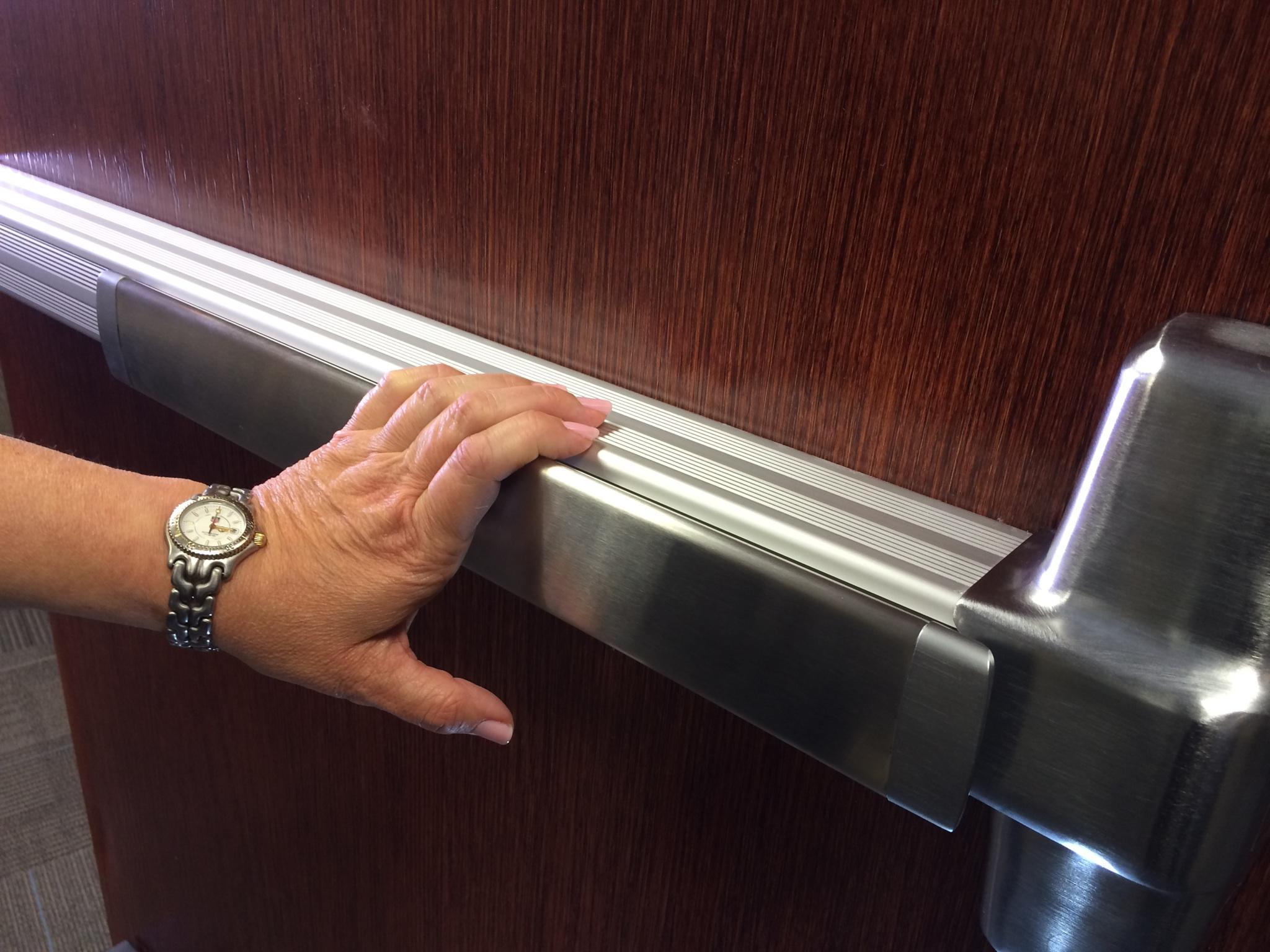While I was putting together my code update presentation for the DHI conNextions virtual conference (coming up in October), I took another look at all of the changes in the 2021 editions of the International Building Code (IBC) and NFPA 101 – Life Safety Code. This was a little tricky since these codes have not actually been published yet. 🙂
 One change that’s worth mentioning here was made to both of these model codes, separating the limitations for the force used to open the door from the force used to operate the hardware.
One change that’s worth mentioning here was made to both of these model codes, separating the limitations for the force used to open the door from the force used to operate the hardware.
The opening force requirements have not changed. To open a manually-operated non-fire-rated swinging door, the opening force is limited to 5 pounds. For other doors – including exterior doors and fire doors, the 2021 editions of the IBC and NFPA 101 allow a maximum of 30 pounds to set the door in motion, and 15 pounds to move the door to the fully-open position. Prior editions of the model codes include a limit of 15 pounds to release the latch, but in the 2021 editions, the operable force for releasing the latch is addressed separately.
 The operable force in these codes is now consistent with the 2017 edition of ICC A117.1, which is the accessibility standard referenced by the IBC and the Life Safety Code. The maximum force to operate hardware with a pushing or pulling motion – like panic hardware, is 15 pounds. For hardware that is operated by a rotational motion – like a lever handle, the limit is 28 inch-pounds. This creates a conflict with the ADA Standards for Accessible Design, which limit the force for operable parts – including door hardware – to 5 pounds.
The operable force in these codes is now consistent with the 2017 edition of ICC A117.1, which is the accessibility standard referenced by the IBC and the Life Safety Code. The maximum force to operate hardware with a pushing or pulling motion – like panic hardware, is 15 pounds. For hardware that is operated by a rotational motion – like a lever handle, the limit is 28 inch-pounds. This creates a conflict with the ADA Standards for Accessible Design, which limit the force for operable parts – including door hardware – to 5 pounds.
I’m not sure when or how this conflict will be resolved, but in the meantime, it’s something to watch out for – especially in states like California where the ADA standards are used for accessibility instead of ICC A117.1. There have been projects where the 5-pound limit on operable force has been enforced, which resulted in panic hardware needing to be replaced with the Von Duprin AX device (this panic hardware operates with 5 pounds of force).
If you have run into this operable-force conflict in the field, I’d love to learn more about how it is typically being handled.
You need to login or register to bookmark/favorite this content.





Lori:
The 2010 ADA Standards states in Section 404.2.9, in the last sentence, that the 5-pound force does “not apply to the force required to retract latch bolts or disengage other devices that hold the door or gate in a closed position.”
If the 5-pound force does not apply per this statement, why would the more general requirement for operable parts in Section 309.4 apply?
Unlike the building code which states the more specific requirement takes precedence over the general requirement, the ADA Standards do not have a similar provision. But should this be tested in court, I would say the enforcement of Section 309.4 on door latching devices would fail because of the specific mention of the 5-pound exception in Section 404.2.9.